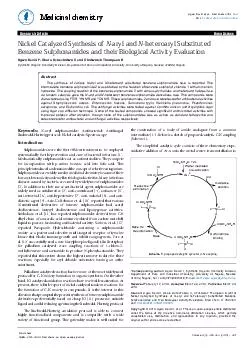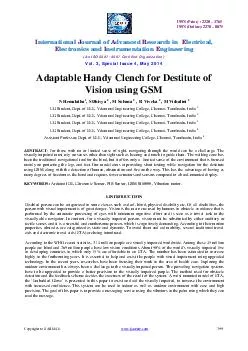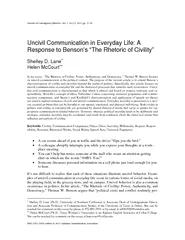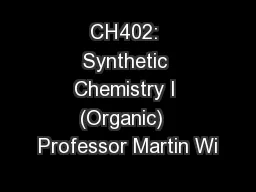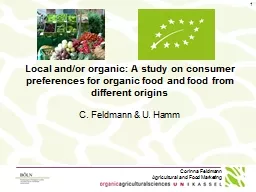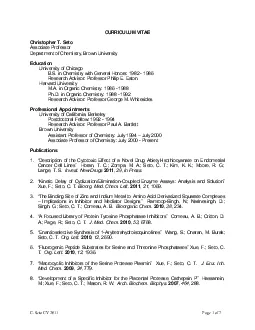PDF-ISSN: 2161-0444 Med chem, an open access journalSynthetic Organic Chem
Author : conchita-marotz | Published Date : 2016-08-09
Ugwu David I Synthetic Organic Chemistry Division Department of Pure and Industrial Chemistry University of Nigeria Nsukka February March MarchUgwu David I Okoro
Presentation Embed Code
Download Presentation
Download Presentation The PPT/PDF document "ISSN: 2161-0444 Med chem, an open access..." is the property of its rightful owner. Permission is granted to download and print the materials on this website for personal, non-commercial use only, and to display it on your personal computer provided you do not modify the materials and that you retain all copyright notices contained in the materials. By downloading content from our website, you accept the terms of this agreement.
ISSN: 2161-0444 Med chem, an open access journalSynthetic Organic Chem: Transcript
Download Rules Of Document
"ISSN: 2161-0444 Med chem, an open access journalSynthetic Organic Chem"The content belongs to its owner. You may download and print it for personal use, without modification, and keep all copyright notices. By downloading, you agree to these terms.
Related Documents

